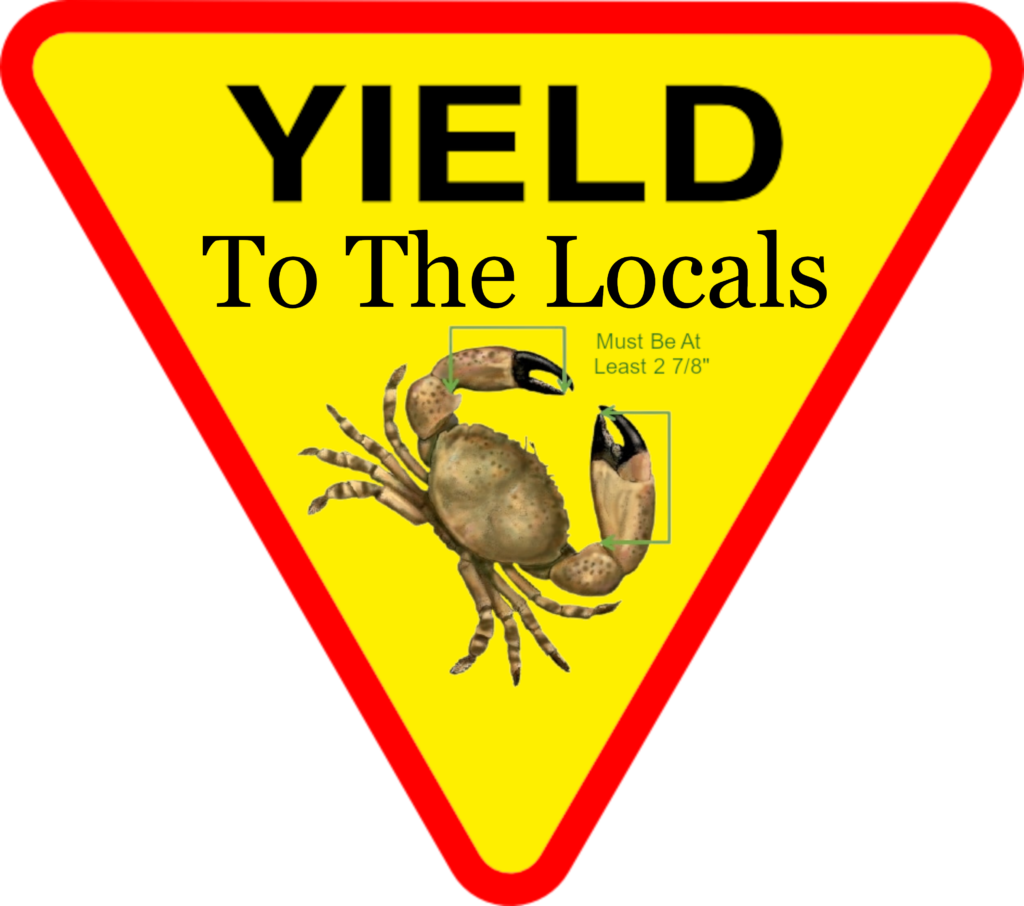At its October meeting, the Florida Fish and Wildlife Conservation Commission (FWC) approved changes to recreational and commercial stone crab regulations for escape ring requirements.
These regulation changes include:
- For the 2023-24 stone crab season, an unobstructed escape ring 2 3/16 inches in diameter for all recreational and commercial plastic or wood stone crab traps is required, with no location requirement specified.
- For the 2024-25 stone crab season and beyond, an unobstructed escape ring 2 3/16 inches in diameter to be located within a vertical exterior trap wall for all recreational and commercial plastic or wood stone crab traps is required.
For more information, including the October 2023 Commission meeting presentation, visit MyFWC.com/Commission and click on “Commission Meetings.”
For current recreational stone crab regulations, visit MyFWC.com/Marine and click on “Recreational Regulations,” “Crabs, Lobster and other Shellfish” and “Stone Crab.”
For current commercial stone crab regulations, visit MyFWC.com/Marine and click on “Commercial Regulations” and “Stone Crab.”


Requirements for Recreational Traps
Recreational fishers age 16 and older (including those normally exempt from needing a license) are required to complete an online, no-cost recreational stone and/or blue crab trap registration before using stone or blue crab traps.
To register, visit GoOutdoorsFlorida.com and add the Recreational Stone Crab Trap Registration or the Recreational Blue Crab Trap Registration to your fishing license account.
Upon completion, each person will receive unique trap registration numbers that must be included on each trap along with the owner’s full name and address. Registration numbers for stone crab traps will begin with the letter “S”; registration numbers for blue crab traps will begin with the letter “B.” This information must be legible and must be permanently attached to each trap.
This no-cost registration will allow FWC to collect important information about these recreational fisheries needed for future stock assessments and management decisions.
Harvesters under 16 are not required to register but still must mark their traps with their name and address.
Regulations

Daily Bag Limit: 1 gallon of claws per person or 2 gallons per vessel, whichever is less.
Harvest from egg-bearing crabs prohibited.
State Waters Harvest Seasons: Open Oct. 15 – May 1 (closed on May 2)
Traps may be placed in the water 10 days prior to the opening of the season, but once placed, you may not tend to the traps until the start of the season, at which time you may begin harvesting.
Gear Requirements:
- Legal Gear: stone crab trap (max. 5 per person), dip or landing net
- Illegal Gear: Any device that can puncture, crush or injure the crab body, such as spears, grains, grabs, hooks or similar devices.
Trap Specifications

- Maximum trap size is 24 inches by 24 inches by 24 inches or a volume of 8 cubic feet
- Traps can be made from either wood, wire or plastic
- The throat or entrance must be 5 ½ inches by 3 ½ inches
- Throat must be no larger than 5 1/2 by 3 1/8 inches in Collier, Monroe and Miami-Dade
- If the throat or entrance is round, it cannot exceed 5 inches in diameter
- Round throats prohibited in Collier, Monroe and Miami-Dade counties
- The trap must have a degradable panel that is 5 ½ inches by 3 ½ inches and is made of cypress or untreated pine slat no thicker than ¾ of an inch
- Wire traps must have at least three unobstructed escape rings (2 3/8 inches in diameter) located on a vertical side of the trap.
- NEW: A 2 3/16” escape ring will be required in all plastic and wood stone crab traps by 2023/2024 season. The escape ring must be located in the lower half of the trap and immediately adjacent to the vertical centerline of the trap wall on which it is installed. An escape ring may not be located adjacent to any corner where two vertical trap walls meet.
- Harvester’s name, address, and unique recreational trap registration number must be permanently affixed to each trap and legible
- The buoy must be no smaller than 6 inches and must be marked with a legible “R” that is at least 2 inches tall.
- Buoys are not required if trap is fished from a dock.
Trapping Regulations
- Traps must be pulled manually (not by a trap-puller). Any vessel that is rigged with a trap-puller will be considered a commercial vessel and the appropriate licenses will be required.
- Traps must be pulled only during daylight hours.
- Traps must not be placed in navigational channels of the Intracoastal waterways, or in navigational channels maintained and marked by any county, municipal, state or federal governmental agency.
Special regulations apply for traps and this species when in Biscayne National Park.

Can both stone crab claws be harvested?
Yes. Both claws of a stone crab may be harvested lawfully if they are of legal size. Although it is currently lawful to harvest both of a stone crab’s claws, this practice leaves the stone crab with few alternatives to defend itself from predators.
Although the crab can still obtain minimal amounts of food with no claws, having one claw (if the other one is harvested) will enable the crab to obtain greater amounts of food in a shorter amount of time. Stone crabs (like other crustaceans) have the ability to grow back their claws, but this process requires a large amount of energy in the form of food.
The quicker the crab can obtain the energy required to molt and grow its lost claw, the sooner this renewable delicacy will have another claw to replace the missing one.
These Keys Treasures Designs and many more are available on products such as T-Shirts, Stickers, Magnets, Mugs, Phone Cases, and much more at KeysTreasures.ReBubble.com



